Beauty is often said to be “in the eye of the beholder,” but what happens when that eye constantly changes? Over the years, the concept of the “perfect” body has shifted dramatically, influenced by culture, trends, and social media. Fitness blogger Cassey Ho takes us on a journey through history, showing how beauty standards have evolved and what that means for women today. Her project highlights how fleeting and unrealistic these ideals can be, urging women to embrace their unique bodies and stop chasing an ever-changing definition of perfection.
Cassey Ho’s Perspective on the Changing Beauty Standards
For Cassey, it started with a realization: the ideal body shape that society celebrates seems to change almost overnight. One year, a curvy body is all the rage; the next, a slim, athletic figure takes center stage. As a fitness blogger, Cassey has always advocated for body positivity, but she noticed the constant pressure women face to adhere to these ideals. These shifts in beauty standards not only impact how we perceive ourselves but also how we treat our bodies. Cassey decided to create a visual project to show how these ideals have evolved through history, imagining what her body might look like if she had conformed to the “perfect” body of each era. Her work serves as a reflection on the absurdity of constantly changing beauty standards and the emotional toll it takes on women.
Video
Explore the changing ideals of women’s body types throughout history in this fascinating video!
Beauty Standards Through the Decades: A Historical Journey
2010s-2018: The Rise of the Curvy Body
The 2010s saw a major shift in body ideals. Instagram models like Kim Kardashian and Beyoncé became the epitome of beauty, with curvy bodies and full hips becoming the desired standard. A big butt, narrow waist, and full lips were considered “perfect,” and many women underwent procedures like butt implants and lip fillers to conform to this ideal. The rise of plastic surgery was undeniable, and by 2014, butt implants and injections had risen by 58%. This period showcased a growing trend of women seeking to enhance their natural curves, often resorting to extreme measures to achieve what they thought was perfection. The era was marked by an obsession with “belfies” (selfies showing off the butt), and body image became tied to social media validation.
But Cassey points out the challenges that come with trying to keep up with this ideal. As the trends changed, women who had worked hard to achieve a certain look were left behind when the next body trend emerged. The pressure was real, and the exhaustion palpable. Women were stuck in a never-ending race, always trying to match the ever-changing ideal.
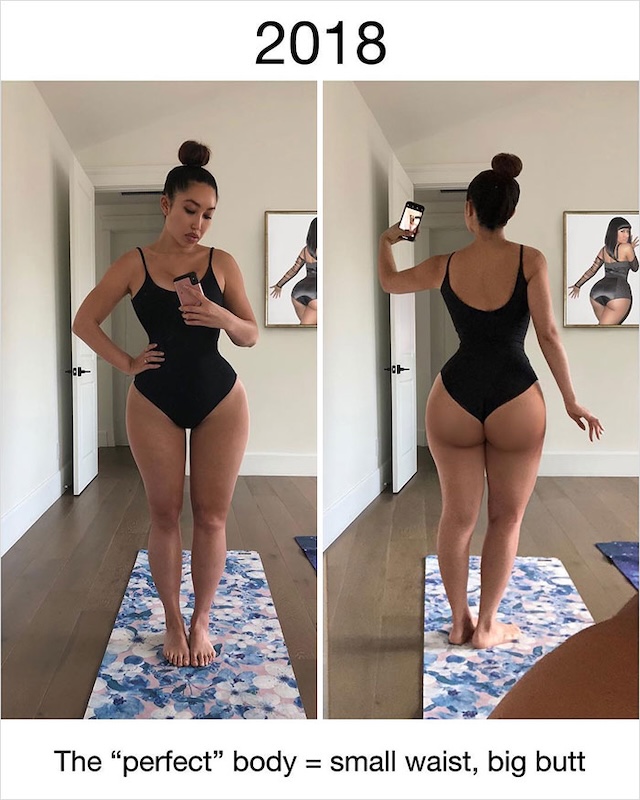
1990s-2000s: The Supermodel Ideal
The 1990s and early 2000s saw the rise of the supermodel, and with it, a new standard for the “perfect” body. This was the era of tall, thin women with long legs, flat stomachs, and large breasts. Supermodels like Cindy Crawford, Naomi Campbell, and Heidi Klum were everywhere, representing the epitome of beauty. In the U.S., breast augmentation surgeries skyrocketed during this time, with breast implants becoming the most commonly performed cosmetic procedure by 2010.
This period saw the height of the “Victoria’s Secret Angel” body type, which was athletic and slender, yet still curvy in all the right places. But Cassey, in reflecting on this period, reminds us that beauty standards, while empowering for some, often left others feeling inadequate. The desire to emulate this body type led many women to adopt extreme dieting habits and exercise routines, sometimes sacrificing their health in pursuit of an unattainable ideal.
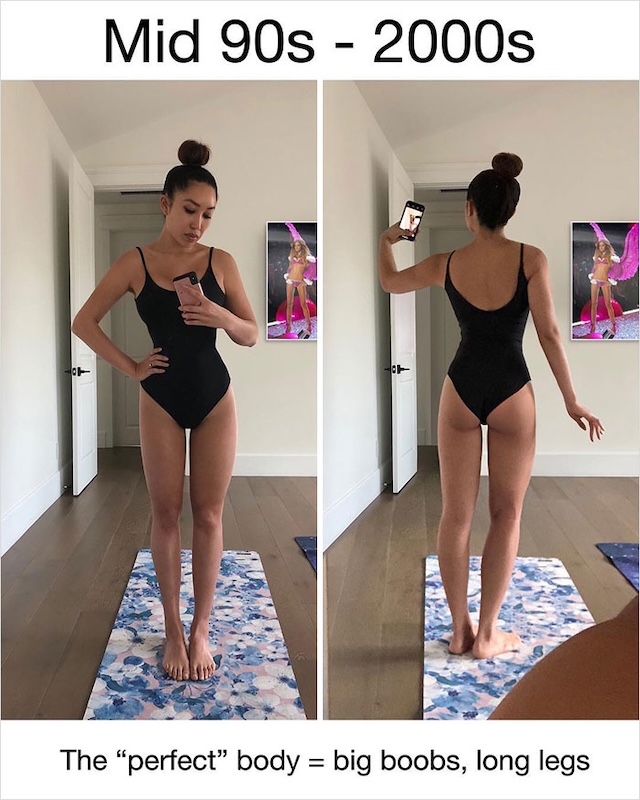
Early 1990s: The Heroin Chic Look
The early 1990s was marked by the rise of “heroin chic”—a controversial and unhealthy beauty standard that celebrated extremely thin, angular figures. Women were celebrated for looking gaunt, almost emaciated, with sharp cheekbones and hollowed-out faces. Models like Kate Moss became the poster child for this look, and the idea of “thinness as beauty” was heavily promoted. This ideal was a stark contrast to the curves and athleticism that came later, but the early 90s also saw a wave of women struggling with eating disorders and body dysmorphia as they tried to emulate this look.
Cassey reflects on how damaging this trend was, noting that it promoted a dangerously thin body that was unrealistic for most women. The pursuit of this ideal was often tied to unhealthy behaviors and poor mental health, highlighting the harmful effects of a beauty standard that celebrated an unattainable figure.
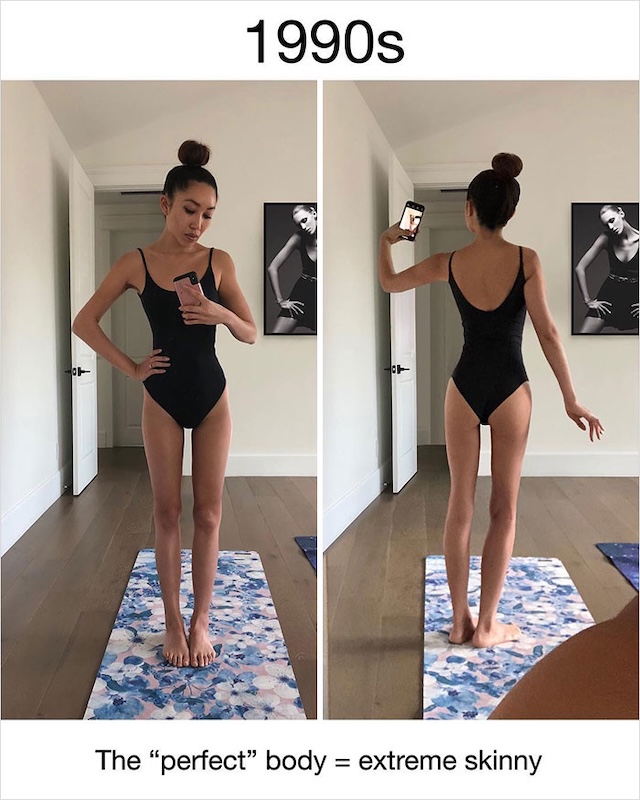
1950s: The Return of the Hourglass
The 1950s saw a return to the hourglass figure as the ideal body type. Influenced by icons like Marilyn Monroe and Elizabeth Taylor, the 50s celebrated a fuller, more voluptuous body, with a small waist, large hips, and a generous bust. This period marked a sharp contrast to the more slim and athletic body ideals that followed in later decades. The ideal was not just about size, but about femininity and softness.
Women were encouraged to embrace curves and were even advertised weight-gaining pills to help achieve the “perfect” figure. It was during this decade that both Playboy magazine and the Barbie doll were created, both celebrating the curvy hourglass as a symbol of beauty. However, as Cassey highlights, even this period came with its own set of challenges—while curves were celebrated, they also became a standard that women felt pressured to live up to.
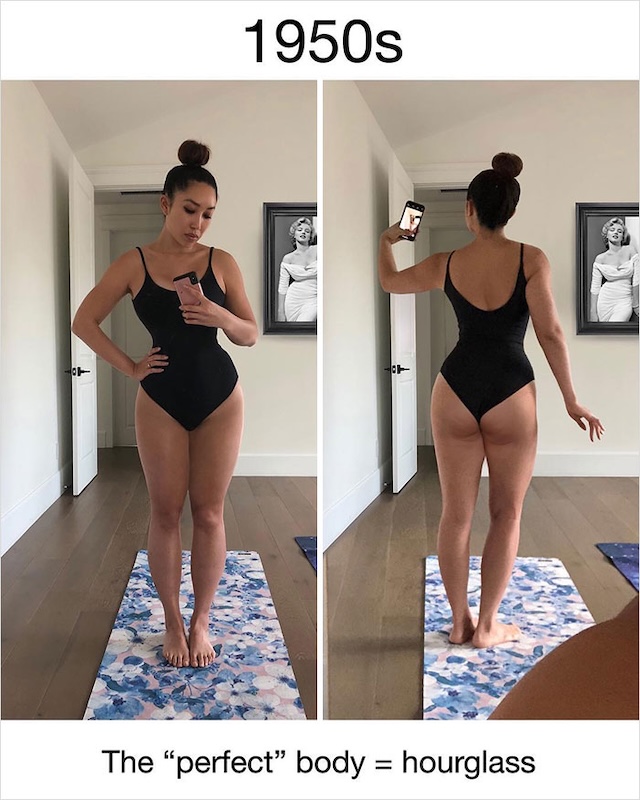
1920s: The Boyish, Androgynous Look
The 1920s was a time of rebellion against the traditional feminine ideals of the previous centuries. Women of the Jazz Age, inspired by figures like Coco Chanel, rejected the curvy hourglass figure in favor of a more boyish, androgynous look. The “flapper” style became popular, where women wore loose-fitting dresses, bound their chests to create a straight silhouette, and embraced a youthful, carefree appearance.
This period marked a dramatic shift in beauty standards, as women fought for equality and freedom in a male-dominated world. The minimalist body, with little to no curves, represented a new form of liberation. Cassey points out, however, that this also created new pressures for women to maintain a slim and youthful figure, setting a precedent for the next wave of body ideals.
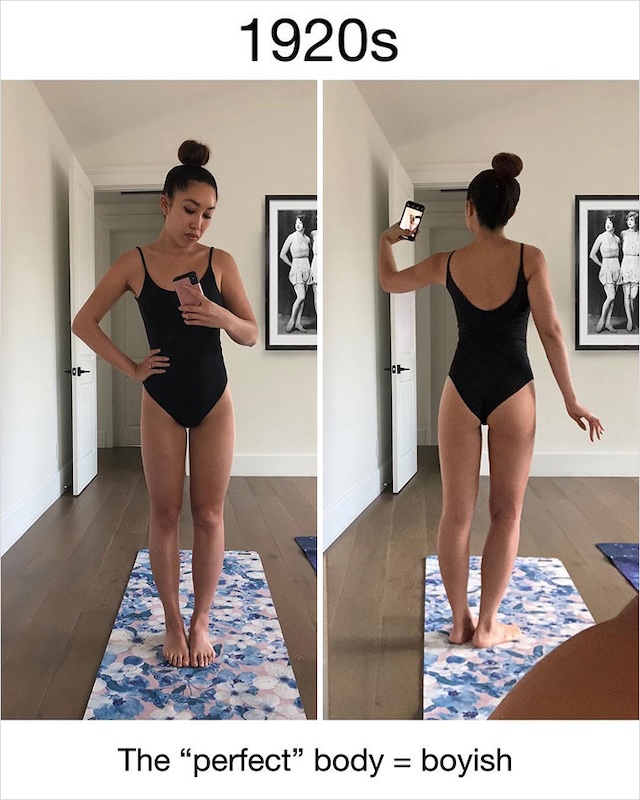
1400-1700: The Renaissance and the Full Figure
In contrast to the slim figures of later periods, the Renaissance (1400-1700) celebrated the full, rounded body as a symbol of wealth and status. In this era, women with rounded stomachs, large hips, and full breasts were admired for their beauty. The ideal was one of abundance and nourishment, a sign of good health and social standing. Thinness was associated with poverty, and women of lower social status were expected to have slimmer, less “refined” bodies.
Cassey notes that, during this time, beauty was closely tied to prosperity. A fuller body was seen as a sign of a well-fed, well-off woman, and thus was highly desirable. This period offers an interesting reflection on how body standards are often dictated by social and economic factors, and how those standards can change depending on the cultural context.
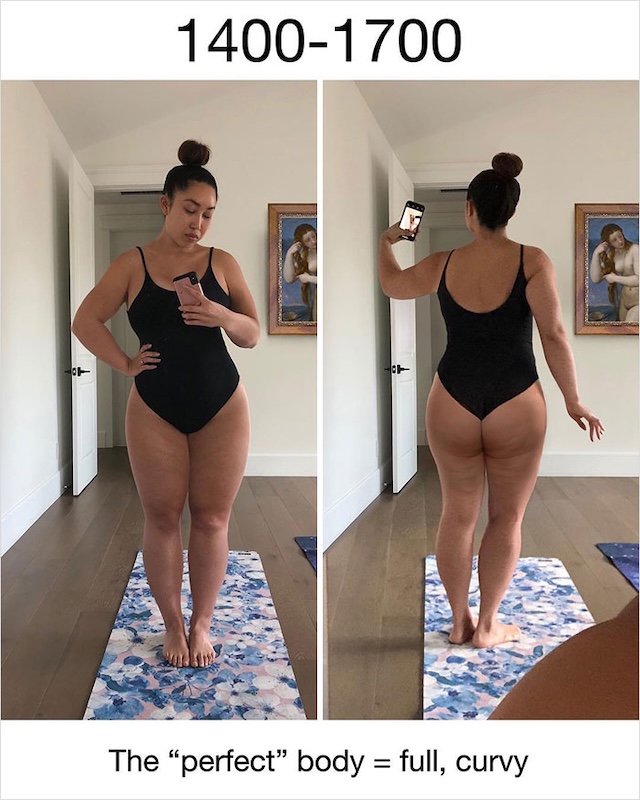
Why Do We Treat Our Bodies Like Fashion?
As Cassey Ho points out in her project, one of the most troubling aspects of beauty standards is the way they fluctuate like fashion trends. “Boobs are out! Butts are in!” she writes, highlighting how quickly body ideals can change and how difficult it is for women to keep up. But while fashion changes season by season, our bodies are not so easily transformed. Constantly trying to alter ourselves to fit the latest trend can be harmful, both physically and mentally. Cassey urges women to stop treating their bodies like disposable fashion items and to instead learn to love and respect themselves as they are.
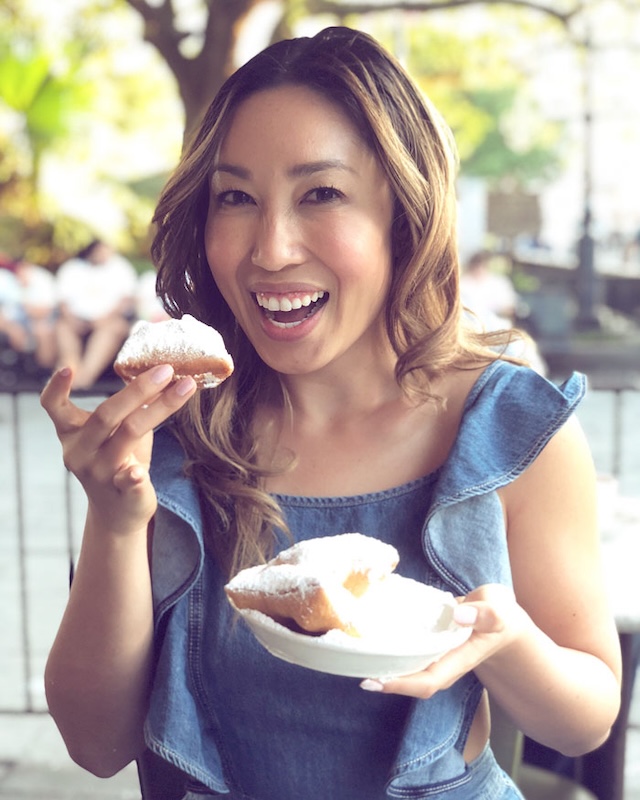
Embrace Your Unique Body: A Call for Self-Love
In the end, Cassey’s message is simple but powerful: the “perfect” body is not a fixed ideal, but the one you already have. She calls on women everywhere to embrace their uniqueness, to stop comparing themselves to the constantly shifting standards of beauty, and to focus on health and self-acceptance instead of striving for perfection. “Every body has a different shape,” Cassey says, “and that’s what makes us beautiful.”
This message is more important now than ever. With the rise of social media and the omnipresence of influencers, women are under increasing pressure to conform to an ever-changing ideal. But Cassey’s project serves as a reminder that beauty is not defined by size, shape, or trends—it’s about feeling good in your own skin and loving yourself for who you are.
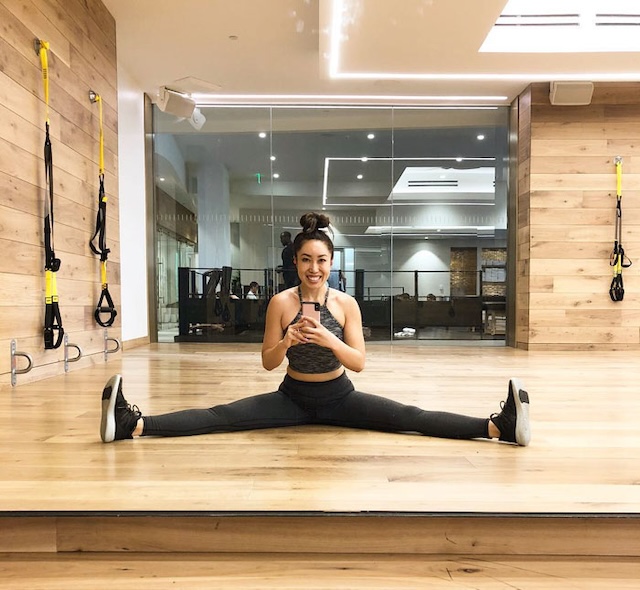
The Impact of Cassey Ho’s Project
Cassey’s project has sparked an important conversation among her followers, many of whom have shared their own struggles with body image. The response has been overwhelmingly positive, with many women expressing gratitude for her perspective on beauty and body acceptance. Through her work, Cassey has shown that the “perfect” body does not exist—what matters is being healthy, confident, and embracing the body you have.
Video
Watch Real Women – Beauty Through The Decades and discover how beauty has evolved in a realistic way!
Conclusion: The Only Perfect Body Is Your Own
As we continue to witness the evolution of beauty standards, one thing remains clear: the only “perfect” body is the one that feels like your own. Beauty will always be in the eye of the beholder, but it should never be dictated by fleeting trends. The perfect body is not something to be attained, but something to be embraced and celebrated for its uniqueness. No matter the era, the only beauty standard that matters is the one that makes you feel empowered and confident in your own skin.

